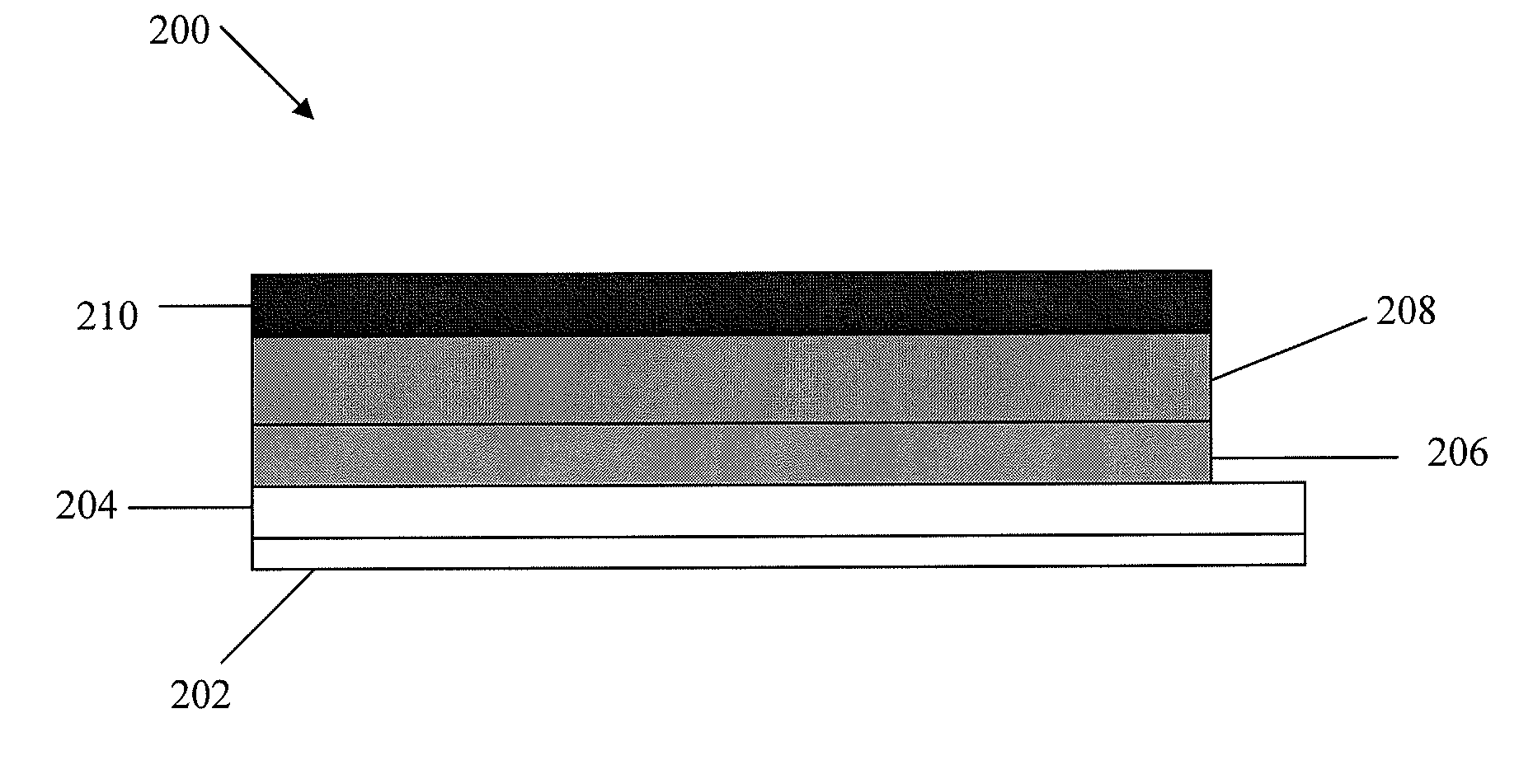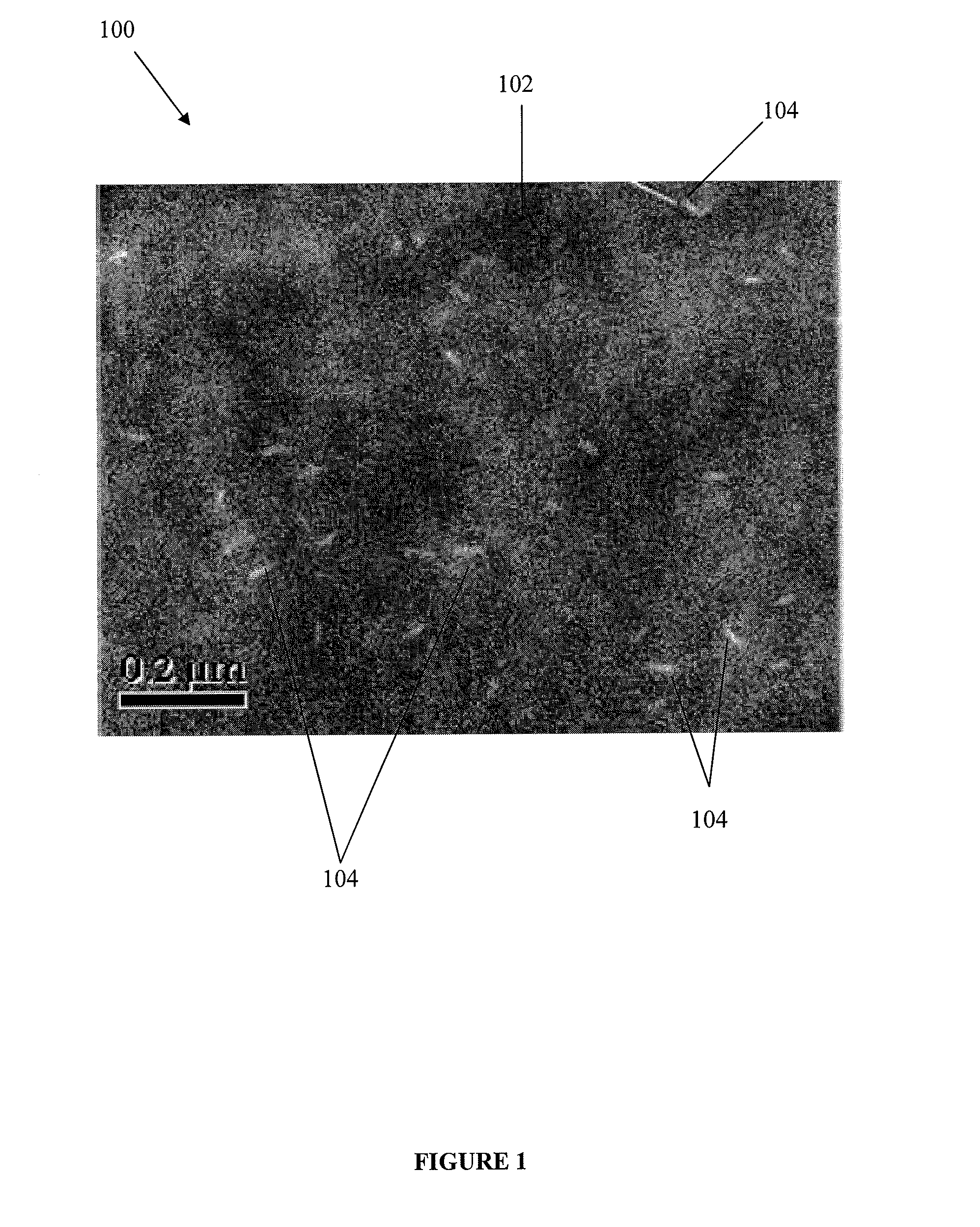Composite organic materials and applications thereof
a technology of organic materials and composite materials, applied in the field of organic thin films, can solve the problems of difficult and expensive production of efficient crystalline-based devices, difficult and expensive production, and difficulty in constructing organic photovoltaic devices having efficiencies comparable to inorganic devices, and achieve the low efficiency of organic photovoltaic devices
- Summary
- Abstract
- Description
- Claims
- Application Information
AI Technical Summary
Problems solved by technology
Method used
Image
Examples
example 1
Photovoltaic Cell
[0082]A non-limiting example of a photovoltaic cell of the present invention was prepared according to the following procedure.
[0083]A photovoltaic cell of the present invention was prepared by spin casting poly(3,4-ethylenedioxythiophene):poly(styrenesulfonate) (PEDOT:PSS) (Baytron P) onto a cleaned indium tin oxide (ITO) substrate (Delta Technologies Rs=10 Ohm square−1). The PEDOT:PSS layer was about 80 nm thick. A blend of regioregular P3HT (Aldrich: regioregular with an average molecular weight, Mw=87 kg mol−1, without further purification) and PCBM (American Dye Source) was subsequently spin coated onto the PEDOT:PSS layer. The ratio of P3HT to PCBM was about 1:0.66. A LiF (0.3-0.4 nm) and aluminum (80 nm) cathode was evaporated onto the polymer stack. The photovoltaic cell was removed from the evaporator and encapsulated using glass capsules with a silicon seal. Once encapsulated, the photovoltaic cell was annealed on a hot plate at about 155° C. for about 3 m...
PUM
| Property | Measurement | Unit |
|---|---|---|
| length | aaaaa | aaaaa |
| diameter | aaaaa | aaaaa |
| thickness | aaaaa | aaaaa |
Abstract
Description
Claims
Application Information
 Login to View More
Login to View More - R&D
- Intellectual Property
- Life Sciences
- Materials
- Tech Scout
- Unparalleled Data Quality
- Higher Quality Content
- 60% Fewer Hallucinations
Browse by: Latest US Patents, China's latest patents, Technical Efficacy Thesaurus, Application Domain, Technology Topic, Popular Technical Reports.
© 2025 PatSnap. All rights reserved.Legal|Privacy policy|Modern Slavery Act Transparency Statement|Sitemap|About US| Contact US: help@patsnap.com



